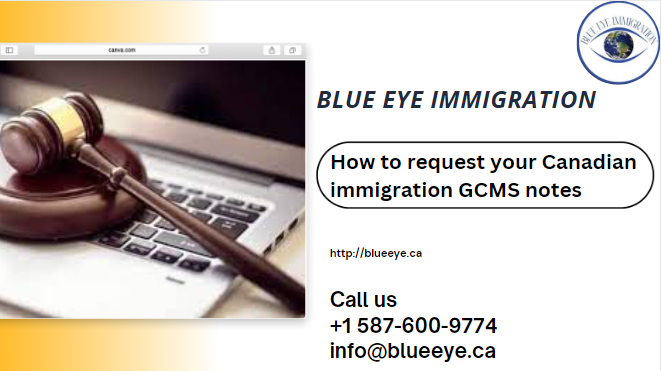The longest part of the Canadian immigration process for many applicants usually comes in the form of application processing time—the period of time after one submits an application, while they await a decision. This stage can extend for a prolonged amount of time, however there is a way that applicants can get an update on the status of their application: by requesting a Global Case Management System (GCMS) note.
Below is a guide on how applicants can request a GCMS note to get more information on their application.
Step 1: Understand What GCMS Notes Are
GCMS notes are a form of Access to Information and Privacy (ATIP) request—the Canadian equivalent of a Freedom of Information Act request in the United States.
GCMS notes official records maintained by Immigration, Refugees and Citizenship Canada (IRCC) and are an essential part of the immigration application process. These notes contain information about you and your application that are stored in IRCC’s Global Case Management System—the program used to collect and process applications within the department. GCMS notes can contain information including (but not limited to): application processing details, details of the officer processing your application, notes from immigration officers, visa officers’ assessments, and all other information that IRCC has on you.
Due to a GCMS notes technical definition as an ATIP request, organizations like IRCC and the Canadian Border Services Agency (CBSA) are legally required to respond within 30 days of receiving the request. However, this period may be extended under specific circumstances.
Step 2: Assess whether you can submit a GCMS Note yourself
Anyone who has an application with IRCC and/or CBSA, and whose application has passed the R-10 completeness stage (more on this later) can potentially apply for a GCMS.
However, to obtain a GCMS note one must first submit an ATIP request, under the Access to Information Act. To submit an ATIP, one must be either be:
- A Canadian citizen or permanent resident
- An individual residing within Canada.
Applicants outside of Canada can still apply for GCMS notes through the use of a representative who is either a Canadian citizen or permanent resident, or a corporation in Canada. This representative will then apply on the applicant’s behalf for an ATIP and will have to complete the Consent for an Access to Information and Personal Information Request form.
Step 3: Determine When to Request Your GCMS Notes
Individuals applying for a GCMS note are recommended to wait until their application passes what is known as the R-10 completeness check. Here, immigration officers determine whether all necessary documents (outlined in each specific application “document checklist”) are included in the application at the time of applying.
After this stage has been passed, applicants can technically request their GCMS notes at any stage of the waiting process, though it’s generally recommended to wait until enough time has passed for more comprehensive notes to be available, providing a clearer picture of your application’s progress.
Step 4: Gather Required Information
Before submitting your request, gather the necessary information to ensure a smooth process. You will need details such as your full name, date of birth, address, application number, Unique Client Identifier (UCI), application number, and any other relevant identification numbers provided by IRCC during the application process.
Step 5: Complete the Request
To request your GCMS notes, you have two different methods depending on whether you reside in Canada or not:
- Submit an Access to Information and Privacy (ATIP) request directly to IRCC; or
- (If you are outside of Canada) Use the services of a trusted immigration consultant or lawyer who can handle the request on your behalf.
Requests for a GCMS note can be submitted (either by the principal applicant or an authorized representative) can be made either online or by mail through official IRCC channels.
Step 6: Pay the Processing Fee (if applicable)
The fee for an ATIP request (and by extension a GCMS note) is $5 CAD, whether submitted online or by mail. If the request is submitted by mail a cheque or money order of the fee amount must be mailed with the application.
Step 7: Await the Response
Once your request and payment have been submitted, another waiting period can ensue. If IRCC has not responded to your request within 30 days, IRCC recommends following up with the ATTIP division of the department, which can be contacted online or by mail.
Step 8: Review and Analyse Your GCMS Notes
Once you receive your GCMS notes, review them carefully. Pay attention to any observations, assessments, or decisions made by immigration officers, and any information pertaining to the officers themselves. These notes can provide valuable insights into the progress and status of your application, helping you understand any potential issues or areas that require attention.
Step 9: Seek Professional Advice (if needed)
If you encounter complex information or have concerns about the content of your GCMS notes, it’s advisable to seek professional advice from an immigration consultant or lawyer. They can help interpret the notes accurately and provide guidance on your next steps. The Cohen Immigration Law Firm has over 60 years of experience operating within the Canadian immigration space and can help you with requesting further information on submitted applications.
